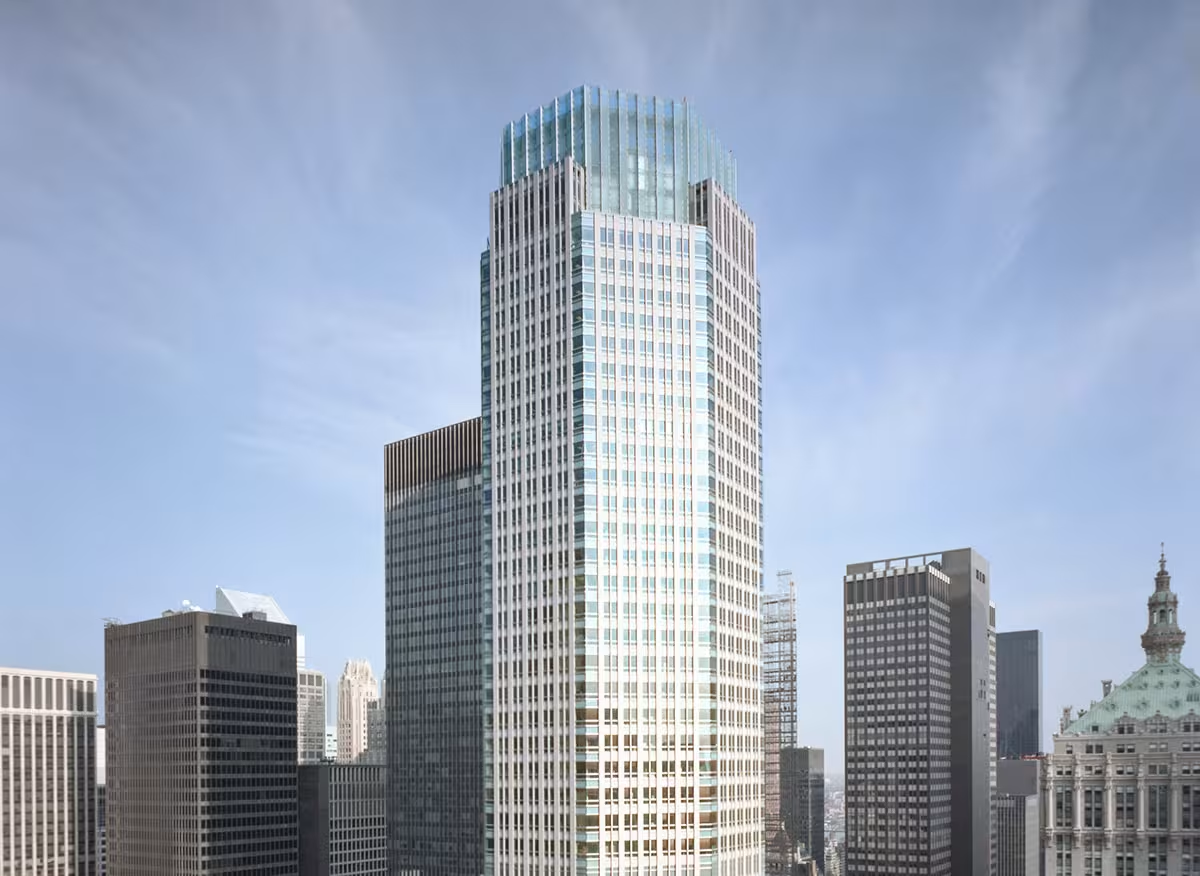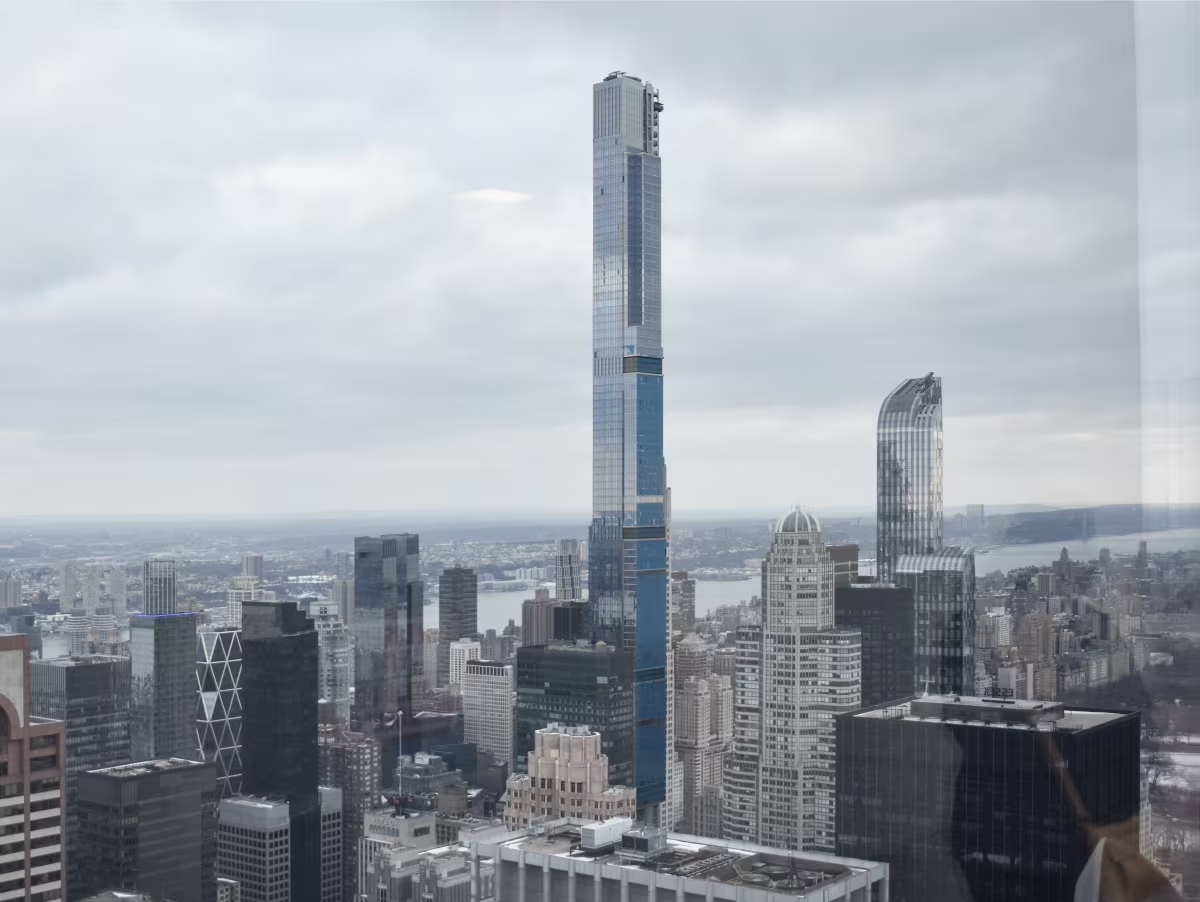383 Madison Avenue Building vs Central Park Tower


Comparing the 383 Madison Avenue Building and the Central Park Tower is interesting because they both rise in New York, NY, yet they were conceived by two different design teams, Skidmore, Owings & Merrill and Adrian Smith + Gordon Gill Architecture, and were completed at different points in time. They were finished more than a decade apart.
This contrast within the same city allows us to see how different creative minds interpreted the evolving needs of New York across time.
Let's take a closer look!
Height & Size
The Central Park Tower is clearly the larger tower of the two, both in terms of height and number of floors. It rises to 1549ft (472m) with 98 floors above ground, while the 383 Madison Avenue Building reaches 755ft (230m) with 47 floors above ground.
Central Park Tower also offers more total built-up area, a total fo 1,285,307 sqf (119,409m2), which is about 101,278 sqf (9,409m2) more than what the 383 Madison Avenue Building offers.
Of course, each project may have faced different briefs or regulatory constraints, which we don't really know about and could also explain the outcome.
Architectural Style
Both the 383 Madison Avenue Building and the Central Park Tower were designed in line with the aesthetic conventions of the Contemporary style.
At the time, this style was at the height of its popularity. So both Skidmore, Owings & Merrill and Adrian Smith + Gordon Gill Architecture followed what was in many ways expected of them, producing designs that fit comfortably within contemporary architectural norms, rather than breaking with convention.
Uses
The 383 Madison Avenue Building is primarily commercial, while the Central Park Tower is primarily residential.
The Central Park Tower offers 179 residential units.
Structure & Facade
Both towers share the same structural solution, a Frame system.
A frame structure uses a grid of columns and beams to carry the building's loads. This frees the walls from structural duties, allowing for flexible floor plans and larger windows.
However, when it comes to the facade, both buildings use different approaches. The 383 Madison Avenue Building uses a Modular facade, while the Central Park Tower uses a Curtain Wall facade.
A Modular facade like the one seen in the 383 Madison Avenue Building employs prefabricated panels, often mixing solid surfaces with smaller windows, while a curtain-wall facade like the one seen in the Central Park Tower uses a lightweight glass curtain wall hung from the structure.
| 383 Madison Avenue Building | Central Park Tower | |
|---|---|---|
| Skidmore, Owings & Merrill | Architect | Adrian Smith + Gordon Gill Architecture |
| 1999 | Construction Started | 2014 |
| 2001 | Year Completed | 2020 |
| Contemporary | Architectural Style | Contemporary |
| Commercial | Current Use | Residential |
| 47 | Floors Above Ground | 98 |
| 230 m | Height (m) | 472 m |
| 110000 | Built-up Area (m²) | 119409 |
| 30 | Number of Elevators | 11 |
| Frame | Structure Type | Frame |
| Steel | Vertical Structure Material | Reinforced Concrete |
| Poured Concrete Over Metal Decking | Horizontal Structure Material | Poured Concrete Over Metal Decking |
| No | Facade Structural? | No |
| Granite, Glass | Main Facade Material | Aluminum, Glass |
| Turner Construction Company | Main Contractor | Lendlease |
| Gerald D Hines Interests | Developer | Extell Development Company |
| OTIS Elevator Company | Elevator Company | Otis Elevator Company |
| Jaros Baum & Bolles | MEP Engineer | AKF Group |
| WSP Cantor Seinuk | Structural Engineer | WSP |
| NY | State | NY |
| New York | City | New York |
| 383 Madison Avenue | Address | 225 West 57th Street |